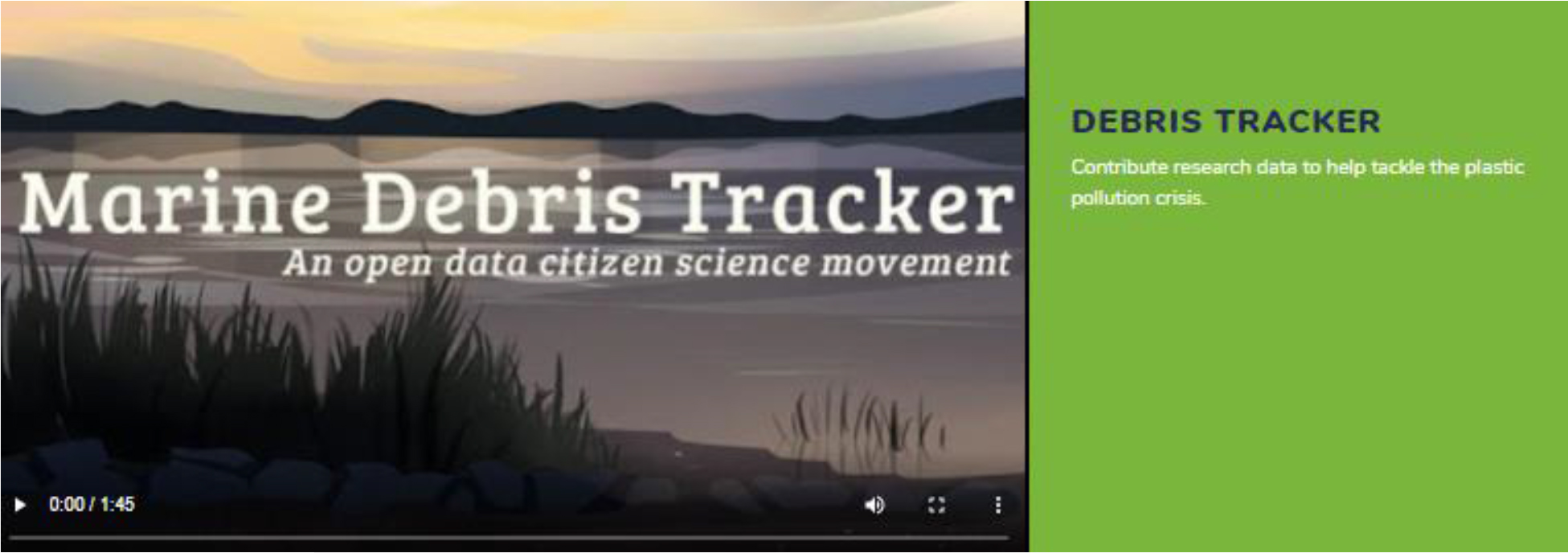Citizen Science
Debris Tracker
Turning Trash Into Data to Solve Ocean Plastic Pollution
Science Scope—September/October 2020 (Volume 44, Issue 1)
By Jill Nugent
We’ve all read the headlines about global plastic pollution, and the information can seem daunting and overwhelming to our young learners. Taking local action on issues can be a powerful and uplifting way to engage learners in addressing global environmental challenges such as plastic pollution. Debris Tracker (also known as Marine Debris Tracker) is based at the Jambeck Lab, part of the University of Georgia’s New Materials Institute; the citizen science project invites you to be a part of the “upstream solution to ocean plastic pollution.”
Roughly 90% of plastics are not recyclable, and large volumes of plastic are entering our oceans each year. Debris Tracker helps to illustrate the big picture of the plastic pollution challenge through open data and citizen science action. The Debris Tracker app was created with help from the National Oceanic and Atmospheric Administration (NOAA), and the technology is powered by Morgan Stanley. Two million observations have been shared with Debris Tracker, and the project’s work to track and prevent plastics from entering the oceans and waterways takes place through a combination of citizen science action, integration of data from multiple organizations, and scientific studies on project data.
Debris Tracker invites educators and learners to help track and prevent ocean plastic pollution, thereby playing a role in addressing the global challenge, through widespread awareness and action.
Project goal: Monitor and report litter around the globe
Your task: Report litter observed near you
Science discipline: Environmental science

The Debris Tracker Education Page on SciStarter provides an introductory project video along with a step-by-step guide to get started engaging with the project
When participating in Debris Tracker, you will track trash near you, wherever you live, and the project data will be available online. By engaging in the project, students will be making a difference while also contributing to scientific research. The Debris Tracker Education page (see Figure 1; also see “Debris Tracker Education Page” under “Helpful Project Links”) will help you to get started on the project. After accessing the mobile app and ensuring that your mobile device has GPS location reporting capabilities turned on, you will be ready to start tracking and reporting any debris that you see. In addition to submitting location and general information related to the debris, you are also able to add photographs to your Debris Tracker observations. The SciStarter Debris Tracker Education page contains resources to implement the project in your classroom, and National Geographic Education also provides helpful educator created materials to support the integration of Debris Tracker in the curriculum (see “National Geographic Education Resources for Debris Tracker”).
Materials you will need:
- access to a computer, tablet, or mobile device with internet connection and GPS capability
- gloves (optional)
- trash bin (optional)
The Debris Tracker citizen science project invites participation any time of the year, and as often as you like. Your class can track a specific location (such as the school campus location) each month, or collectively engage with the project anytime, across different locations (e.g., students’ neighborhoods and local parks).
Current events, headlines, and relevant news stories can serve as a motivator to tap into student interest related to an issue, as well as inspire action related to an issue or challenge. Debris Tracker can help facilitate this by increasing awareness of the plastic pollution issue and engaging learners in local action to address this pressing global challenge.
Debris Tracker at a glance
When: Anytime
How: Visit the SciStarter Debris Tracker Education Page (see “Debris Tracker Education Page” under “Helpful Project Links”) for a step-by-step guide on how to get started.
Where: Global
Time needed: One hour (or as much time as desired)
Special equipment needed: No
Cost: None
Safety: As with any science lab, classroom, or field activity, always follow recommended safety practices; for more information on safety in the science classroom, visit www.nsta.org/safety.
Helpful Project Links
Project home—https://marinedebris.engr.uga.edu/about-2/
Project link on SciStarter—https://scistarter.org/marine-debris-tracker
Education Page—https://scistarter.org/education
Debris Tracker Education Page—https://scistarter.org/education/debris-tracker-homeschool
National Geographic Resources for Debris Tracker
Printable “How-To” Guide for Debris Tracker—https://media.nationalgeographic.org/assets/file/S2S-MDT_guide_foldout_printer.pdf
Printable Plastic Pollution Action Journal—https://media.nationalgeographic.org/assets/file/S2S_Student_Journal.pdf
Marine Debris and Plastic Pollution Middle School Science Educator Resources—https://bit.ly/2B6BIB9
Video Resources
Project overview—https://www.youtube.com/watch?v=0Pbd1OcQeOA
Project tutorial—https://www.youtube.com/watch?v=f0cqWL22DoY
Visual overview of the mobile app for educators—https://www.youtube.com/watch?v=FnYZNYt02ek
Uploading Debris Tracker data to Google Maps for educators—https://www.youtube.com/watch?v=COnMc2FqMCE
Jill Nugent (jillfnugent@gmail.com) teaches science online; engages educators in citizen science experiences for the classroom, schoolyard, and beyond; and serves on the SciStarter Team. Follow SciStarter on Twitter: @SciStarter.
This column is the result of a partnership between SciStarter and the National Science Teaching Association. For more information about SciStarter and other citizen science projects, please visit www.scistarter.org.
Citizen Science Environmental Science Life Science Middle School


